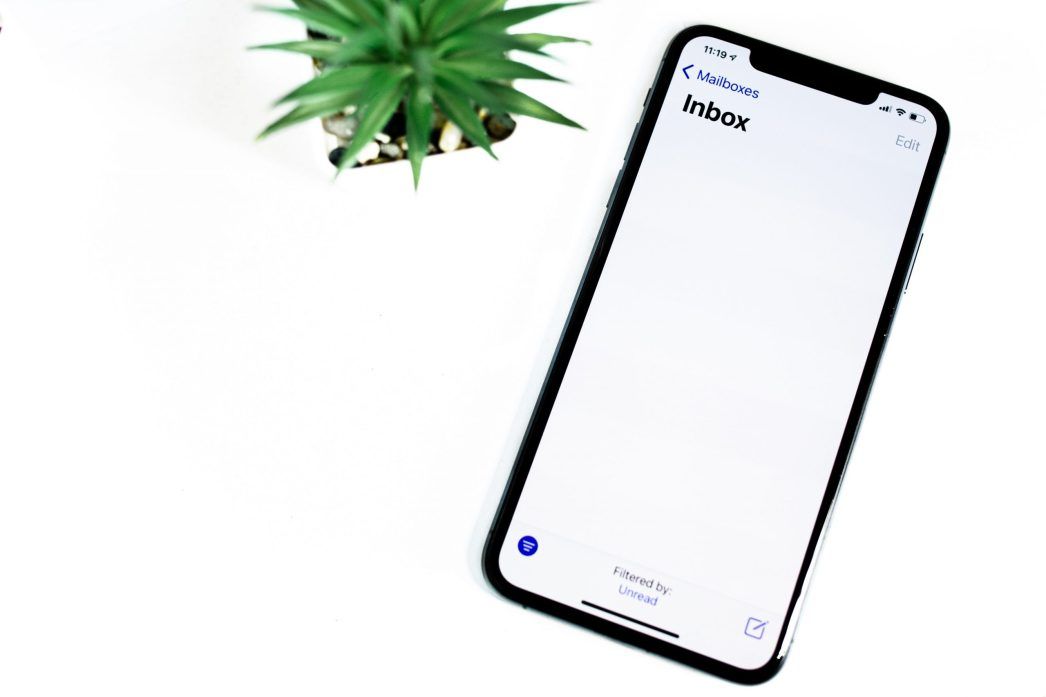
Why should you even care about email marketing? Isn’t social media the best way to reach the largest market online?
Did you know, that average social media engagement is 1.26% – that means each social media post you create will, on average, only reach 1 out of every 100 followers. That’s tiny!
On the other hand, with email marketing, the average figures are:
>> 85% will see your email⠀
>> 35.63% will open your email⠀
>> 2.61% will click on a link in your email⠀⠀
And that’s just the average figures.
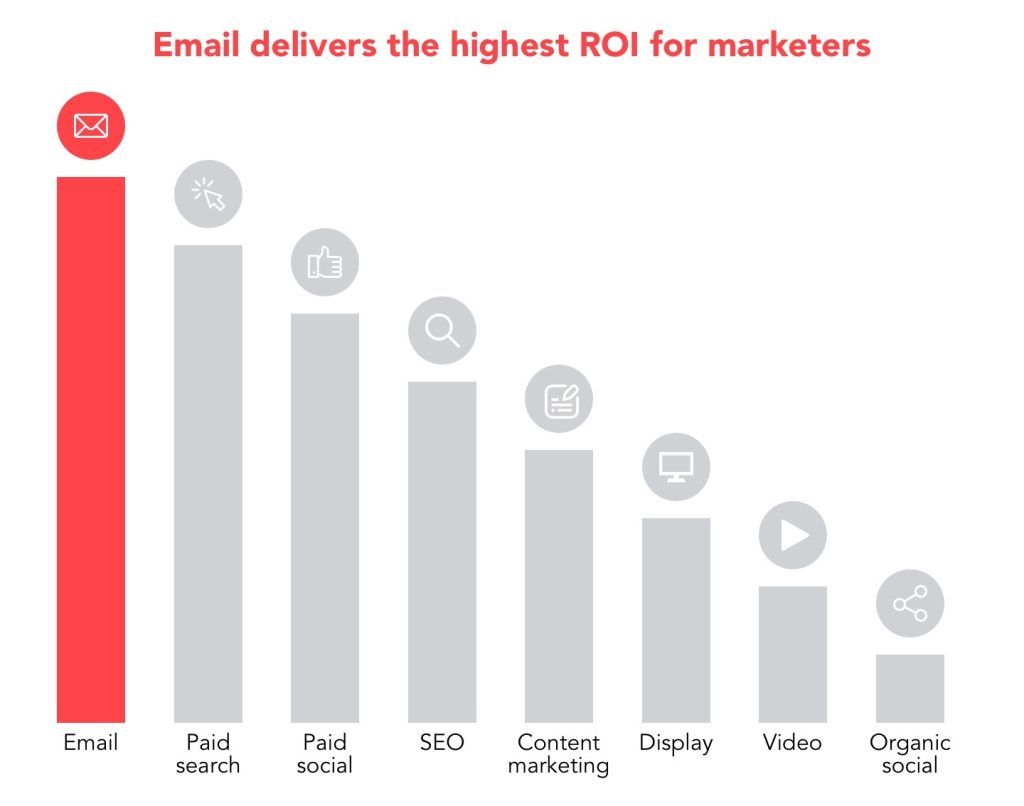
Digivate’s 10 years of experience working with different eCommerce, B2B, and B2C clients shows that email is the channel generating the highest ROI for companies.
However, with 94% of organizations targeted by phishing attacks in 2024, businesses must prioritize email security. To prevent phishing, it’s essential to use authentication protocols like SPF, DKIM, and DMARC, educate employees on recognizing suspicious emails, and implement multi-factor authentication (MFA) for added protection.
Email marketing is so powerful because it’s a form of advertising that is actually welcomed.
The great thing about email marketing is that the people who subscribe to your email list are expecting emails from you.
About 80% of consumers WANT to receive retail emails that recommend products to them based on previous purchases.
This is why email is excellent for repeat purchases.
There’s no doubt email marketing is among the best ways to generate income for your business.
There are many types of emails you can send, but each one is an opportunity to make a connection and build trust.
What Is Email Marketing & Why Is It Important For Business?
Email Marketing is a digital marketing strategy that involves sending emails to a targeted audience with the goal of promoting products, services, or brand messages. It can include a variety of email types, such as newsletters, promotional offers, product updates, and personalised messages. The core objective of email marketing is to build relationships with customers, drive engagement, and ultimately drive sales.
Why email marketing is crucial for businesses:
- Direct communication: Email allows businesses to communicate directly with their audience. Unlike social media or search engine ads, where messages might get lost in a sea of content, emails go straight to the recipient’s inbox.
- High ROI: Email marketing often delivers a high return on investment (ROI). According to various studies, for every dollar spent on email marketing, businesses can expect an average return of around $42.
- Personalisation: Email marketing enables highly personalised communication. Businesses can segment their email lists based on user behaviour, preferences, and demographics, allowing for targeted and relevant messaging.
- Customer retention: Regular, well-crafted email communications help keep a brand top-of-mind with existing customers. It’s an effective way to nurture leads, encourage repeat purchases, and build customer loyalty.
- Cost-effective: Compared to many other marketing channels, email marketing is relatively low-cost. There are minimal expenses associated with sending emails, making it accessible for businesses of all sizes.
- Measurable results: Email marketing platforms provide detailed analytics on open rates, click-through rates, and conversions. This data helps businesses understand what’s working and make data-driven decisions to optimise their campaigns.
- Automation opportunities: Email marketing can be automated to save time and increase efficiency. Automated workflows can trigger emails based on user actions, such as welcome emails for new subscribers or cart abandonment reminders.
- Scalability: As businesses grow, email marketing strategies can easily be scaled. Campaigns can be adjusted to accommodate larger lists, more complex segments, and a broader range of messaging.
So how do you get started? What are the steps to set up an email campaign and ensure it’s a success?
Step 1: Establish Your Goals
Whether for B2B, B2C, or eCommerce, email marketing is an easy-to-implement, cost-effective, and versatile marketing tool that will boost the trajectory of your product sales.
Here are the 12 most common business goals that email marketing helps you achieve.
Is your email marketing goal:
- Generating conversions
- Building awareness (about a brand, business, event, service, product)
- Upsell & cross-sell (e.g. offering upgrades to regular customers)
- Email tracking (e.g. a confirmation email about the purchase made & showing a customer how to track delivery)
- Appointment reminders
- User reviews
- Growing your social media following (e.g. ask existing followers on IG to follow you on a new platform)
- Sharing vital information (e.g. new privacy statement, changes in returns & refund policies, taxes & free shipping updates)
- New launch announcements
- Event invitation (This is a good way to engage with your regular customers face-to-face in a tailor-made event –which builds loyalty to your business).
- Fundraising
- Customer care (allows users to reply at a more convenient time & gives your CS team breathing room to respond with customized answers, thereby improving overall customer satisfaction)
Step 2: Build Your Email List
Your lead magnet is the key to building your email list.
A lead magnet is an irresistible offer to a prospect in exchange for their email address (or contact information). Think about a lead magnet that’s useful, relevant, and will make your prospect’s life easier.
Make sure your offer is aligned with the value that you will provide throughout your relationship. Your free offer should eventually lead to your product or service.
The point of your email list is to eventually guide subscribers to a paid offer.
Also, it is important that when people visit your website, you should have a sign-up form where they can enter their email addresses to subscribe to your email list. AWeber’s tool makes it easy to create a sign-up form and add it to your website.
Types of Lead Magnets for eCommerce
Here are a few types of lead magnets you can create if you run an eCommerce store:
- Coupon
- Purchase discount
- Free shipping
- An “ultimate guide to shopping” for your product’s niche
- Daily deals (on goods being promoted or on sale)
- No-strings-attached gifts, and giveaways.
Example of eCommerce lead magnet:
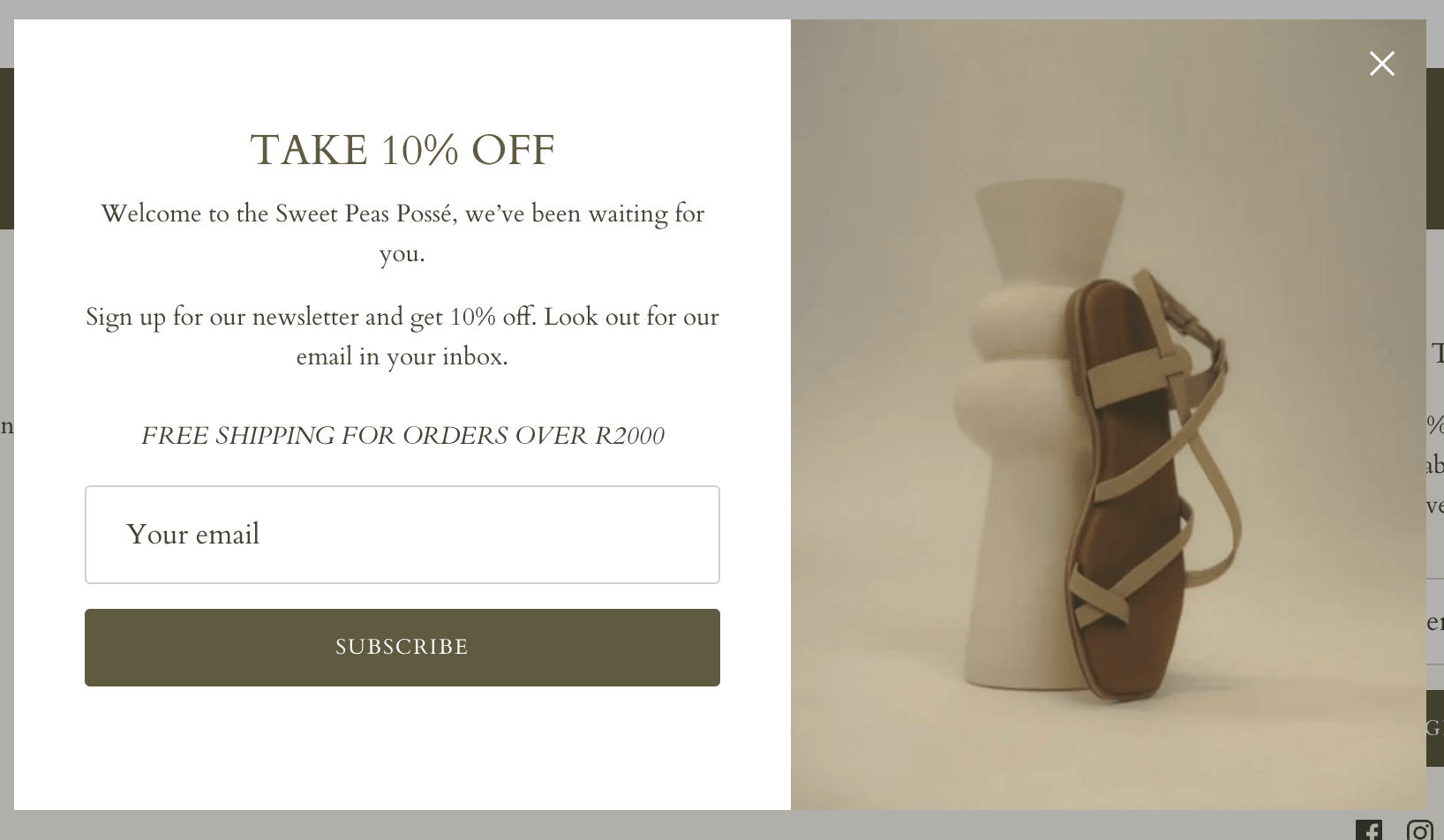
Types of Lead Magnets for B2B Businesses
Here are typical lead magnets you can create if you are in the B2B business.
- Webinars
- Free consultations
- Product demos
- White papers
- Newsletters
Example of a B2B lead magnet (webinar):
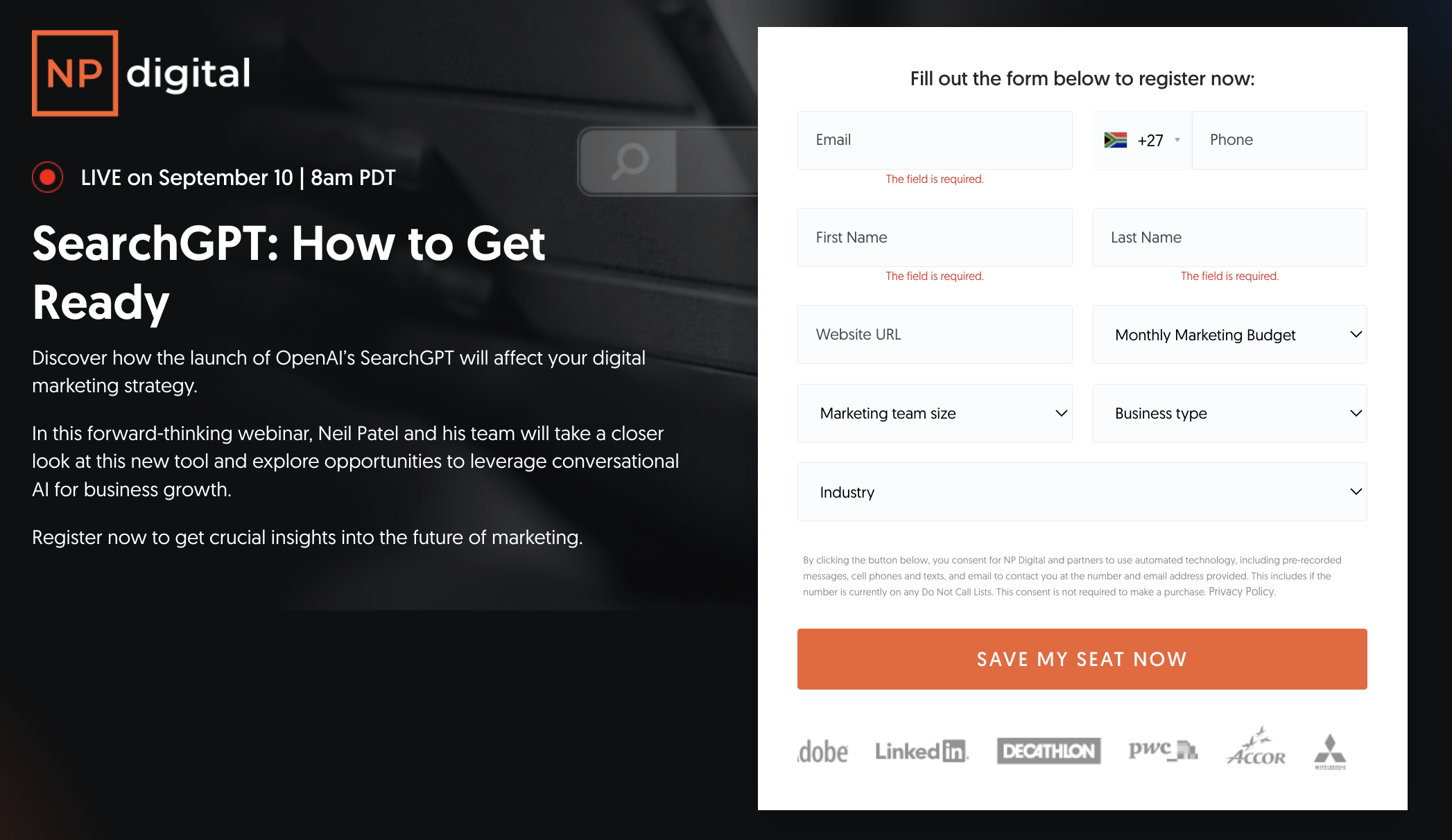
Example of a B2B lead magnet (newsletter):
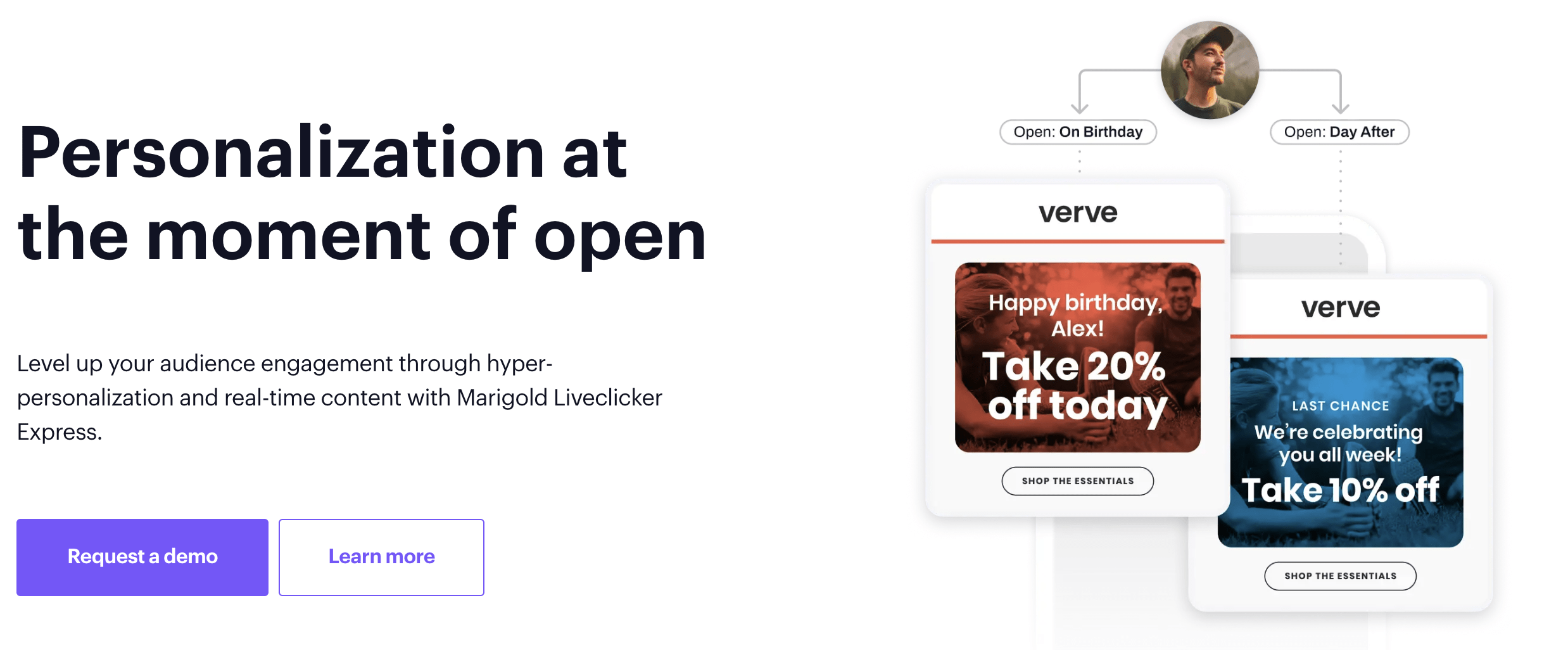
Example of a B2B lead magnet (free consultation):
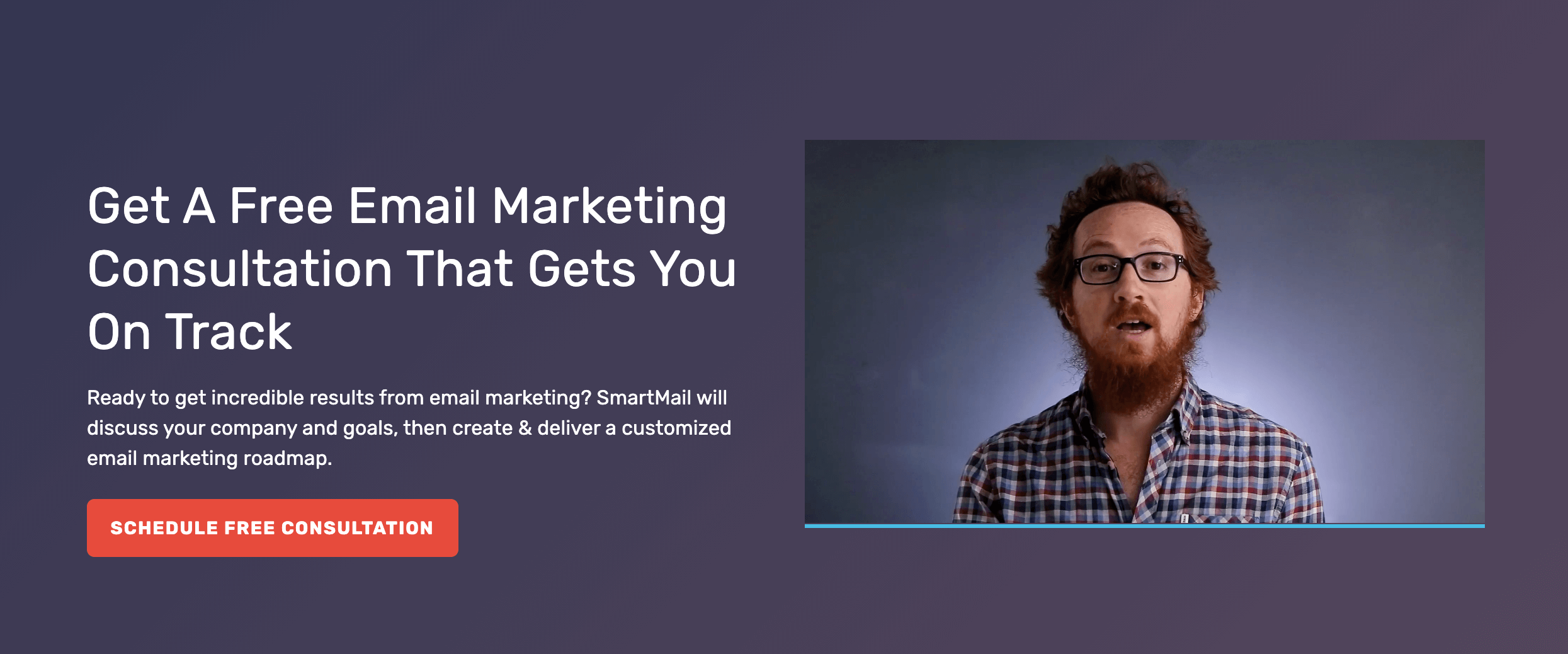
Types of Lead Magnets for B2C Businesses
Here are typical lead magnets you can create if you are in the B2C business.
- Coupon at signup
- eBook complementing what you sell
- Offering exclusive access
- Offering free samples
Example of a B2C lead magnet (coupon at signup):
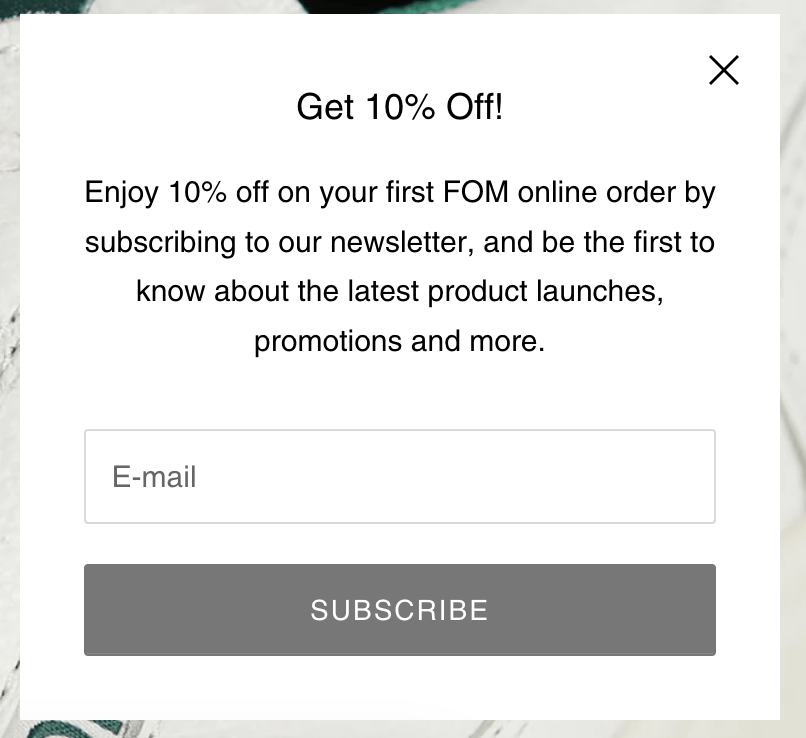
Step 3: Select the Type of Email Campaigns You Want to Send
There are different types of emails you can use to fit your business goals. But a successful campaign isn’t all about the right strategy or the right kind of email – it’s really about the right sequencing.
Even if it’s the right email sent at the wrong time, people will opt-out of your emails.
To streamline and optimise your email sequencing, consider using any of the best email campaign software. This type of software allows you to schedule and automate the delivery of your emails, ensuring that they reach your audience at the most opportune moments.
Types of B2C emails to send (some of these overlap with eCommerce):
- Welcome emails – this is an email that your subscribers receive when they first join your list.
- Email nurture series – this is a sequence of emails you send to educate your customers about your product, your brand, or your niche.
- Referral emails – these are the emails where you incentivise existing subscribers/customers to refer family & friends to your brand.
- Discount emails – discounting is an effective marketing strategy that will increase your conversion rates
- Upsell/cross-sell emails – are the emails where you promote more expensive or complementary offers.
- Win-back emails – these are the emails where you remind previous/disengaged buyers you’re still thinking of them.
Types of eCommerce emails to send:
- Immediate recovery emails as well as exit offers – Instead of sending a follow-up email, present an exit offer with a promo code to shoppers who have attempted to leave the cart or checkout pages at the moment it occurs.
- Cart abandonment email – this is the email you send when your visitors fill up the cart, and then leave your store without checking out.
- Email receipts – these are emails you send to confirm your customer’s purchase; it’s also a great time to send them further promotions.
- Send Wishlist reminder emails.
- Send personalised “Nearly Out of Stock” emails.
- Provide exclusive promo codes and gifts for loyal customers
- Personalise emails related to their recent purchases
Types of B2B emails to send:
- Curated emails – these types of emails contain newsworthy information about the company that’s valuable for clients to know, such as product launches, new pricing options, and Award wins.
- Campaign, webinar & event emails – these are online or online activities you invite your audience to take part in. The goal here is to upsell these leads later.
- Case study emails – these let your prospects know the specific benefits they can get from your products/services. You can share the success stories of your clients (client testimonials, revenue growth, etc.)
Step 4: Create Your First Campaign
There are many email marketing platforms like MailChimp, Mailerlite, Aweber, etc that will allow you to easily create email campaigns with a drag-and-drop feature.
However, if you’re looking to send beautifully customised emails, an email marketing agency like Digivate could help you both design perfect emails and also manage all your email marketing campaigns from start to finish. While hiring professionals is important, don’t forget to make the most of the tools you already have at your disposal. Add an engaging email footer or a clear HTML email signature to show professionalism and trust in your emails. This small detail can make a big impact in your segmented email campaigns.
Step 5: Segment Your Subscribers
Don’t send blast emails.
Beyond relevancy, email list segmentation is very important from a revenue perspective.
According to DMA data, targeted and segmented emails generate 58% of all email revenue.
Those companies who used segmented campaigns saw a 76% increase in sales, plus over 76% of marketers say that part of their email marketing strategy is basic segmentation.
Why is Email Segmentation a Must?
Every email you send out should make your subscribers feel like you’re connecting with a human –a complete contrast to herding all leads into a one-size-fits-all box. Each customer who signs up to receive your emails is at a different level of susceptibility to buying your product.
Segmenting your list allows you to build more trust with your leads –which will make it easier for you to convert them later.
Here are common email list segments you can create to increase click-through rates and to help you plan more targeted content:
- Market: useful for customizing the message into niche/market-specific content.
- Demographics: useful for tailoring campaign messages to any combination of gender and
- Geographic location: helpful when targeting specific markets & promoting store-specific info while screening out subscribers, not within the same area.
- Workflow activity: helpful when creating campaigns specific to subscribers that fall within specific stages of your funnel (e.g. sending emails only to those who completed more than 50% of an auto-responder series).
- Past activity: useful for grouping subscribers based on past open and click-through behaviour. You can tailor future campaigns based on which content works best for certain segments.
- Customer data: useful for eCommerce brands that aim to send targeted campaigns to VIP customers or customers in danger of being lost without having made any purchase within a specific time.
Step 6: Personalise & Automate
To truly maximise the effectiveness of your email marketing, it’s essential to go beyond basic segmentation and delve into advanced strategies like automation and personalisation. While segmentation helps target different groups within your audience, automation and personalisation elevate your email campaigns by delivering highly relevant and timely content to each individual.
Automation involves setting up automated workflows that trigger emails based on specific actions or conditions. For example:
- Drip campaigns: These are automated email series sent over a period of time to nurture leads or guide them through a customer journey. For instance, a welcome series might be triggered when someone signs up for your email list, sending them a sequence of emails that introduce them to your brand and products.
- Behavioural triggers: Automated emails can be sent based on user actions, such as abandoned cart reminders, purchase confirmations, or re-engagement campaigns for inactive subscribers. These triggers help maintain timely and relevant communication with your audience.
Personalisation involves tailoring email content to individual subscribers based on their preferences, behaviours, and demographics. For example:
- Dynamic content: This allows you to create different versions of an email within the same campaign. For instance, you might display different product recommendations based on the recipient’s past purchases or browsing history.
- Personalised recommendations: Using data from previous interactions, you can offer tailored product or content suggestions that resonate with the recipient’s interests and behaviours.
Step 7: Measure Your Results
It’s necessary to determine how your email campaign is performing.
There are important metrics you should measure regularly if you want to keep a “healthy” email list and to improve the ROI of your campaigns.
Focusing on the right metrics will help in analysing and improving ANY of your campaigns.
Evaluate these marketing metrics regularly to gauge the effectiveness of your email campaign.
Example of email marketing metrics:
#1. Complaint Rate: percentage of email recipients who marked your email as spam.
- Ideal tracking: Weekly
- Reasons: sending irrelevant content, using purchased email lists, out-of-date email addresses, emailing too frequently
#2. Unsubscribe Rate: percentage of email recipients who click the “unsubscribe” button inside your email.
- Ideal tracking: Weekly
- Reasons: not having a strong ‘welcome series’, misleading subject lines, “from” name isn’t recognizable, poor emailing pace (too frequent or too infrequent)
#3. Open Rate: percentage of email recipients who open your email. This is an important metric because your email campaigns would mean nothing if recipients weren’t opening and reading them.
- Ideal tracking: Weekly
- TWO major factors impact open rates: the sender’s name and email subject line
#4. Click-through Rate: percentage of email recipients who clicked on the link/s inside your email. This is an important metric because most of the time, getting customers to click on a link is usually the main goal of your campaign.
- Ideal tracking: Weekly
- Affected by the anchor text on the link, the number of times you display the link, the location of the link in the body of your email, the message leading up to the link
#5. Bounce Rate: percentage of total emails sent but NOT successfully delivered to your recipient’s inbox.
- Ideal tracking: Monthly
- Emails bounce when: email addresses are non-existent, the recipient’s mailbox is full, or the recipient is on vacation & set up auto-reply if the receiving server has blocked arriving emails
#6. Conversion Rate: percentage of email recipients who’ve accomplished your desired action (i.e. buying your product).
- Ideal tracking: Monthly
- Several factors will affect your conversion rate –depending on how you define a successful conversion for your particular campaign. If a successful conversion happens AFTER the customer clicks on a link inside your email, you’d want to make sure your website is optimised for conversions.
#7. Share/Forward Rate: percentage of email recipients who forwarded/shared your email by clicking on the ‘share’ button inside your email. This is an important metric as it is a behaviour you want to increase. If your current leads are forwarding your content, they’re becoming ambassadors of your brand and creating leads for you.
- Ideal tracking: Monthly
- The biggest element here is nurturing your email list. Remember to reward/nurture your existing customers.
#8. Campaign ROI: the overall revenue for your email campaign.
- Ideal tracking: Monthly
#9. List Growth Rate: the rate at which your email list has grown over a specific time.
- Ideal tracking: Monthly
- If your list isn’t growing, then it’s dying. Besides people unsubscribing, email addresses tend to go “stale” because they’re getting new email accounts and abandoning old ones. Be sure to constantly build your list and keep your unsubscribers at a reasonable number.

Main Takeaway
Email marketing is a powerful source of revenue if you master clever automation and triggers, segmentation and grouping, tracking, copy, and design.
Because let’s be honest:
Even though basic email marketing is easy, scalable email marketing is not.
We can help you run your email marketing campaigns smoothly, monitor your performance regularly, and grow your business. Contact us for advice today.



